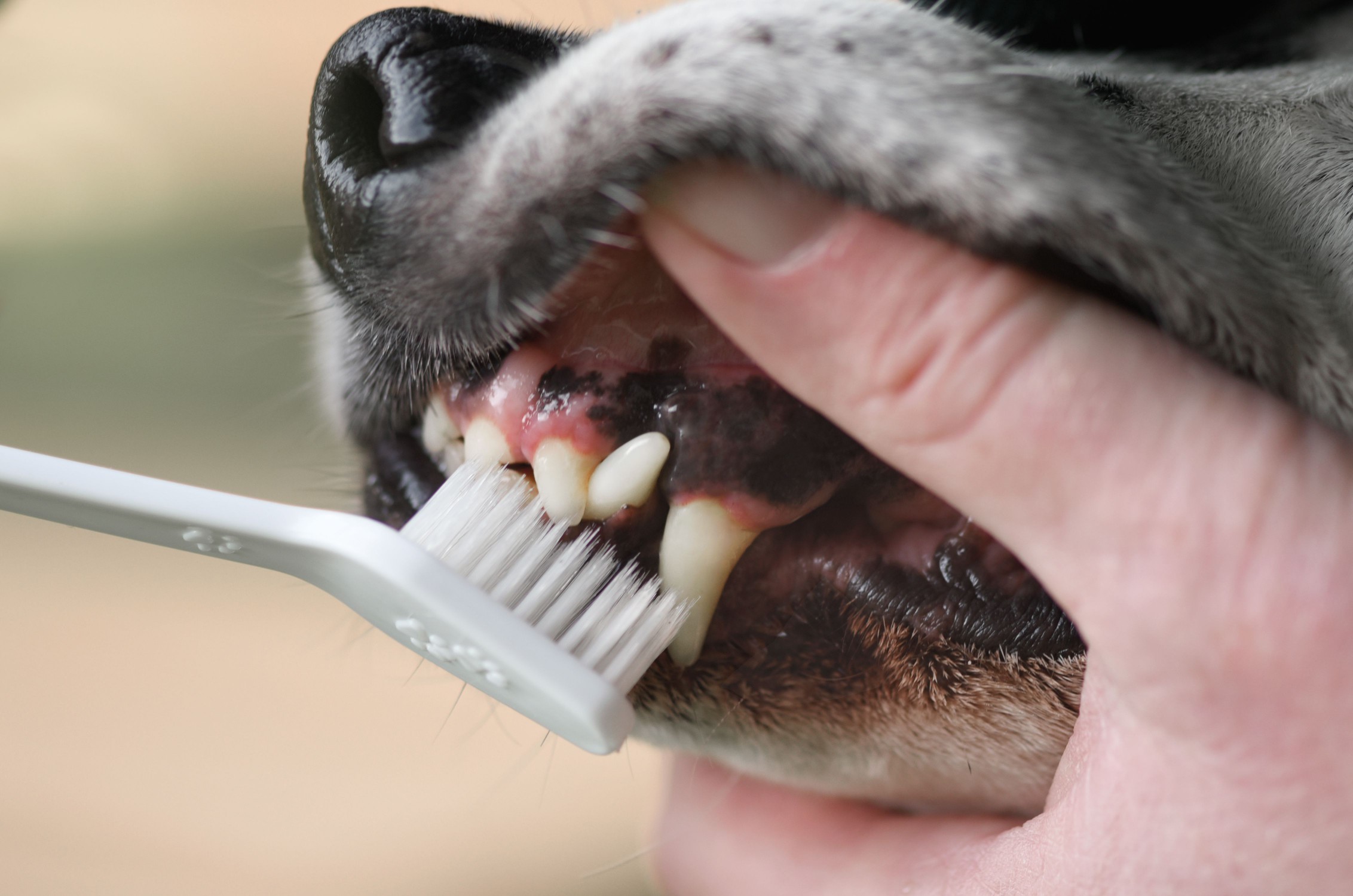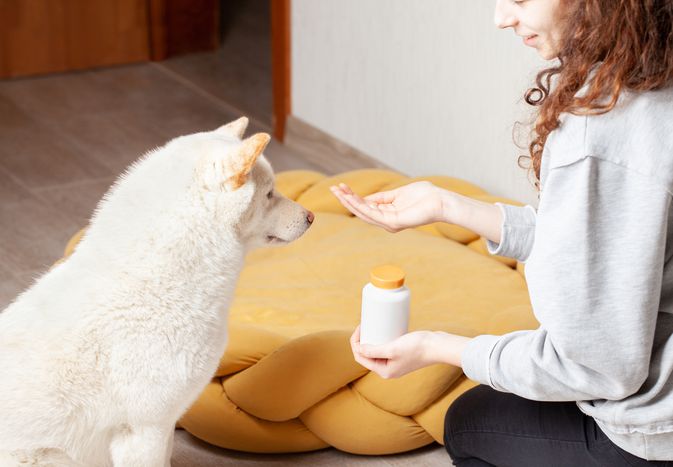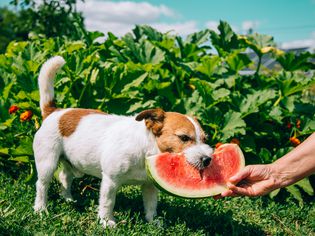A solid indicator of your dog's health is the color of his gums. Healthy dog gums are powdery pink in color. When this color and other normal gum attributes change, such as moistness and temperature, it can mean that something is wrong and should be further examined by a veterinarian.
A sick dog's gum coloring could be blue, black, pale white, or bright red. Dog gums that aren't pink can indicate problems ranging from gum disease to congestive heart failure.
What Do Normal Dog Gums Look Like?
Normal gums should be a bubble gum pink color. When pressed with your index finger, the gums should lighten to a white or pale pink color and then quickly (within two seconds) return to the normal pink color when you take your finger off of the gums.
The amount of time it takes for the gums to return to the normal pink color after you press on them is called the capillary refill time, or CRT. Gums should also be slippery or wet and smooth if you were to run your finger over them. They should not be sticky or dry.
Common Gum Problems in Dogs
Unhealthy gums in dogs can indicate underlying issues, ranging from dental disease to systemic health problems. By observing the color, texture, and odor of your dog's gums, you can catch health issues early. Monitoring and addressing any signs of unhealthy gums promptly can help prevent further complications and ensure your furry friend maintains optimal oral and overall health.
Blue Gums
If inadequate amounts of oxygen are circulated through your dog's blood supply, their gums may turn blue or purple. This gum color is medically referred to as cyanosis. Cyanosis can be caused by a variety of issues, including: pneumonia, congestive heart failure, pulmonary thromboembolism, and other respiratory problems.
Diseases that inhibit proper breathing and oxygenation will cause blue gums, but these diseases are often unavoidable. Be sure not to smoke around your dog, and get veterinary treatment as soon as possible if your dog is having trouble breathing for any reason.
Pale Pink or White Gums
If a lack of blood or hemoglobin is present in a dog, then the gums may be pale pink or even white. This is most often a sign of anemia or acute blood loss. Many underlying diseases can cause anemia, and trauma can result in severe, acute blood loss. When the body doesn't have enough blood to circulate, the normal pink color fades. Conditions that cause anemia are very serious.
Acute blood loss and diseases that cause anemia should be addressed immediately to help prevent pale or white gums from developing.
Bright Red Gums
If your dog's gums are very red or bright pink, it may mean they are overheated or have stomatitis or gingivitis. Dogs with heat stroke often present with bright red gums as they are panting in an attempt to cool their body temperature. Bright red gums are also a sign that there is inflammation in the gums or they are infected. Both of these periodontal problems can make the gums bleed more easily and can be painful.
Keeping your dog at a normal body temperature will help prevent bright red gums that are seen in an overheated dog. But if these red gums are due to stomatitis or gingivitis, regular dental care should be performed to prevent it from occurring.
Growths on Gums
Oral tumors are commonly found on the gums of dogs. Sometimes, these growths are benign or go away on their own, and other times, they are cancerous or contagious. Papillomatosis is a viral disease that is easily spread from dog to dog and results in pink, fleshy warts on the gums, along with other areas on the body. These are typically not as concerning as other types of growths or tumors. Other tumors can be cancerous and cause serious health concerns in a dog, in addition to causing problems eating and pain.
The occurrence of warts may be able to be decreased by limiting exposure to dogs who currently have these pink warts. If the growths are cancerous or another type of mass, there is no known way to completely prevent their occurrence.
Bleeding Gums
Stomatitis, gingivitis, and growths can often cause a dog's gums to be very sensitive and prone to bleeding. If your dog has bleeding gums, he should be checked out by a veterinarian to assess the underlying cause.
If the gums are bleeding due to poor dental health, regularly brushing teeth and providing proper dental care is vital to maintaining healthy gums.

The Spruce / Evgeniya Vlasova
Treating Gum Problems in Dogs
The treatment plans vary for gum problems in dogs. For problems involving the gums that are related to respiratory conditions, immediate oxygen therapy is often necessary in addition to medications specific to the underlying condition.
For pale pink or white gums, a dog may need a blood transfusion due to anemia or blood loss. If a growth is involved, surgery may be necessary to remove them from the gums. Dental care involving cleaning, tooth extraction, medications, and sometimes even cold therapy laser treatments may be necessary to address bleeding or bright red gums.
Finally, if a dog is overheated and has bright red gums, cooling it down should address this.
- Why does my dog have black gums?
It's perfectly normal for your dog to have black patches on its gums. But if the discoloration is new, or accompanied by terrible breath, it's time to bring your dog to the vet.
What do dehydrated dog gums look like?Dry, pale, or tacky gums could indicate dehydration in a dog. If this is happening, you need to call your vet.
Why are my dog's gums bleeding when brushing?A number of conditions can make your dog's gums bleed when you brush their teeth. It could be gingivitis or it could be a sign of something much more serious. To figure out the reason, you must call your vet.








